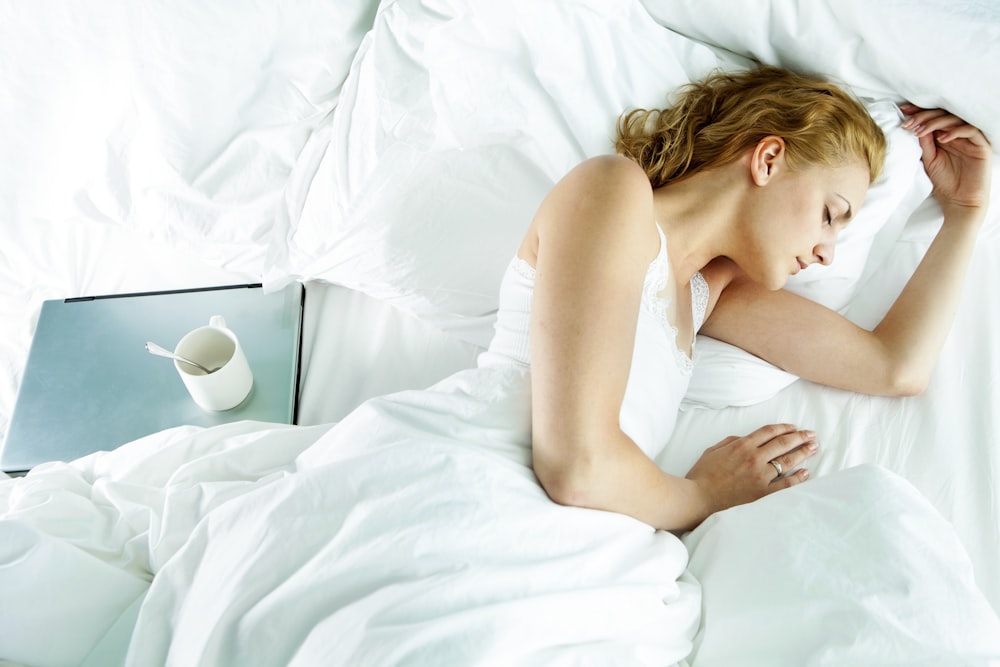
Restless legs syndrome (RLS), also known as Willis-Ekbom Disease, is characterized by unpleasant or uncomfortable leg sensations and an insatiable desire to move them. Symptoms usually appear in the late afternoon or evening. For many people, the symptoms of restless leg syndrome are at their worst at night, while a person is relaxing, such as sitting or lying in bed.
As you can imagine, restless leg syndrome can disrupt someone’s ability to sleep, and interfere with their regular daily activities, as well.
Restless legs can also happen when someone is idle or sedentary for too long, as they are sitting for long periods of time. For example, when taking a long trip on an aeroplane or watching a movie.
When it comes to sleep, it may be difficult to fall asleep or return to sleep after waking up because symptoms can worsen during the night. The soreness is usually relieved by moving the legs or walking, but the sensations generally return after the action is stopped and the person is sitting idle again.
What Causes Restless Legs Syndrome?
Restless leg syndrome is often an unknown cause for the majority of patients (primary RLS). However, restless leg syndrome also has a genetic component and can be identified in families where symptoms begin before the age of 40. RLS may also be caused by low amounts of iron, a vital mineral we need a lot of. RLS is also linked to or associated with the following factors or underlying conditions:
- Hemodialysis and end-stage renal illness
- Iron-deficient anemia
- Certain medications, such as anti-nausea medications (e.g., prochlorperazine or metoclopramide), antipsychotic medications (e.g., haloperidol or phenothiazine derivatives), and antidepressants that enhance serotonin (e.g., fluoxetine), may intensify RLS symptoms.
- Alcohol, nicotine, and caffeine usage during pregnancy, especially in the last trimester; symptoms normally diminish within 4 weeks following birth
- Neuropathy (nerve damage).
- In certain people, sleep deprivation and other sleep disorders such as sleep apnea can increase or provoke symptoms. Reducing or removing these elements may help to alleviate symptoms.

A Sleep Disorder and a Movement Disorder
Restless leg syndrome is classified as a sleep disorder because symptoms are induced by relaxing and trying to sleep, as well as a movement disorder because sufferers are obliged to move their legs to relieve symptoms. It is, however, better described as a neurological sensory condition characterized by symptoms that originate in the brain.
RLS is frequently caused by unknown factors. The illness may be caused by an imbalance of the brain chemical dopamine, which transmits impulses to control muscular activity, according to researchers.
Many RLS sufferers describe being unable to concentrate, having a poor memory, and failing to complete daily duties. If left untreated, moderate to severe RLS can cause a 20% drop in job productivity and contribute to melancholy and anxiety. It can also make travelling more challenging.
RLS affects both men and women, although women are more frequently than males suffer from it. It can happen to anyone at any age. Many people who are badly affected are in their forties or fifties, and the symptoms tend to get worse and persist longer as they get older. RLS is thought to affect up to 7% to 10% of the population in the United States.
Symptoms of Restless Leg Syndrome
People who have RLS and a medical condition that goes along with it tend to acquire more severe symptoms more quickly. Those who have RLS that is unrelated to any other ailment, on the other hand, endure a very sluggish growth of the disorder, especially if it begins at a young age; many years may pass before symptoms appear on a regular basis.
The main symptom is a strong desire to move one’s legs. RLS is frequently accompanied by the following symptoms:
- Sensations that begin after a period of rest. The sensation usually starts after you’ve been lying down or sitting for an extended period of time, such as in a car, plane, or movie theater.
- Movement provides relief. Movement, such as stretching, jiggling your legs, pacing, or walking, relieves RLS.
- Symptoms are worse in the evening. Symptoms are most noticeable at night.
- Leg twitching in the middle of the night. RLS may be linked to a more frequent condition known as periodic limb movement of sleep, which causes your legs to twitch and kick while you sleep, perhaps all night.
Diagnosis
There is no single test that can be used to diagnose restless legs syndrome. Your symptoms, medical and family history, physical examination, and test findings will all be used to make a diagnosis. Your doctor should be able to identify restless legs syndrome, but if there’s any doubt, they may recommend you to a neurologist. To confirm a diagnosis, your GP or specialist will look for four primary factors.
These are the following:
- A strong desire to move your legs, generally accompanied with an unpleasant sensation such as itching or tingling
- When you’re resting or sedentary, your symptoms appear or worsen.
- Your symptoms are alleviated by moving or rubbing your legs.
- Your symptoms become more severe in the evenings or at night.

Assessing Your RLS Symptoms
To help assess the severity of your symptoms, your family doctor (your GP) or specialist will ask you about the pattern of your symptoms. Managing RLS symptoms that are mild can often be achieved by adopting some lifestyle modifications.
Consider the following scenario:
- establishing a consistent sleeping schedule
- avoiding stimulants in the evening, such as caffeine, alcohol, or cigarettes
If your restless leg syndrome symptoms are more severe, you may require medication to alleviate them.
They might, for example, ask you:
- How frequently do you experience symptoms
- How unpleasant your symptoms are to you
- Whether your symptoms are causing you a lot of pain
- Whether your sleep is disturbed, causing you to be fatigued during the day
Keeping a sleep journal might assist your doctor in determining the severity of your symptoms. You could even journal during the day about your symptoms, when they happen, in what context, etc. Journaling and documenting symptoms helps you and your doctor understand your disorder much better.
Treatment of Restless Leg Syndrome
RLS can be treated with care that focuses on symptom relief. Temporary alleviation may be obtained by moving the affected limb(s). Finding and treating an underlying medical issue, such as peripheral neuropathy, diabetes, or iron deficiency anaemia, can sometimes alleviate RLS symptoms.
Although iron supplements and drugs can assist, there is no single prescription that can effectively manage RLS for all individuals. Furthermore, drugs taken on a regular basis may lose their effectiveness with time or even worsen the illness, necessitating a medication change.
RLS can be treated in a variety of ways, including:
- Changes in your way of life. In people who have mild to moderate RLS symptoms, some lifestyle changes and activities may help.
- Iron. A trial of iron supplements is indicated as the first treatment for people who have low or sub-normal ferritin and transferrin saturation levels in their blood.
- Anti-seizure medications. Anti-seizure medications are becoming the first-line treatment for RLS patients.
- Agents that act on the dopaminergic system. These dopamine-boosting medications are commonly used to treat Parkinson’s disease.
To find out which health conditions you might genetically be at risk of developing, get your comprehensive health report via CircleDNA.






